I am doing classes again! It’s been 4 years, but I am back. This time, my classes are at our local library, and they are for families with children of any age and ability. I am calling them workshops because I’m not really teaching how to do art as much as I am facilitating an open-ended, creative experience. My first workshop featured three open-ended tables, and one of them was this flower still-life table! I have so much to share about this experience.
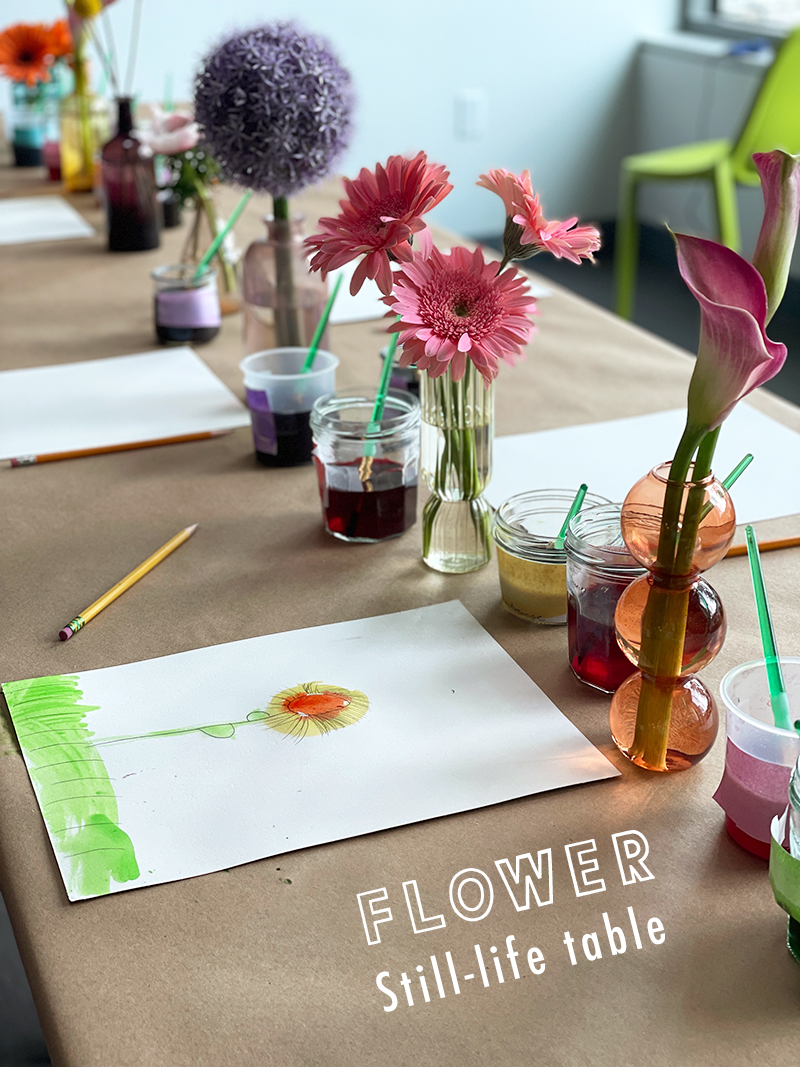
[ I am a participant in the Amazon Services LLC Associates Program, an affiliate advertising program designed to provide a means for us to earn small fees at no cost to you by linking to Amazon.com and affiliated sites. ]
First, let me tell you about the materials needed to set up this up.
Flower Still-Life Table Materials List:
~ Butcher paper to cover table
~ Liquid watercolor
~ Jars or containers for the watercolor (I use jam jars, but these no-spill cups are great, too)
~ Watercolor paper (bought in bulk)
~ Pencils
~ Paint brushes (these are the best for all ages)
~ Small vases / bud vases / jars for the flowers
~ Flowers (I got most at Trader Joe’s, picked some from my yard, and bought a few from a local flower shop)
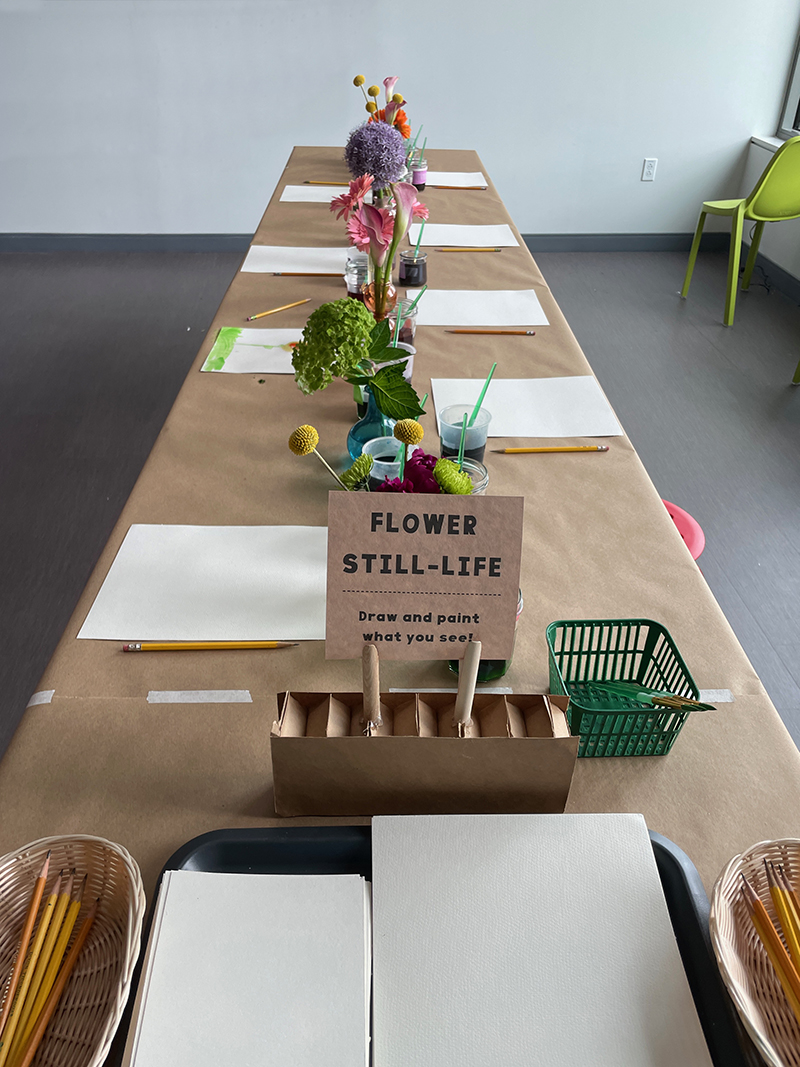
Stories and Observations
I wanted to create three open-ended, self-serve stations in the space. I decided on cardboard ice cream cones for a tempera paint and collage experience, a maker table for a construction experience, and a still-life table for drawing and experimenting with liquid watercolor. I was sure the cones and maker table would be a hit, but I was unsure how popular the still-life table would be. Drawing can be intimidating, or so I thought.
It turns out, the children who ended up coming into the space ranged in age from 2 to 16, and every one of them sat down at the still-life table to play with the paints. I think the draw was both the beauty of colorful presentation, and the novel material. Most if not all who participated had never used liquid watercolor!
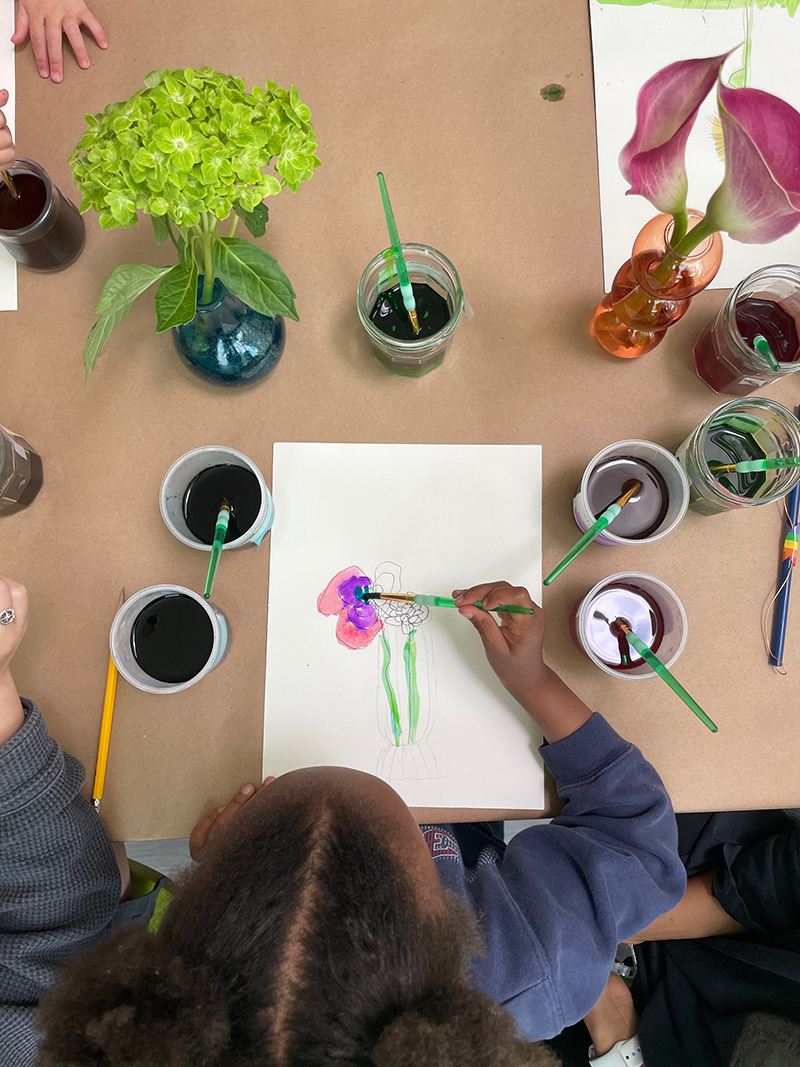
This child above, who was about 5 years old, came with her older sister who was babysitting. At first the older sister started to draw the vase for her little sister, the the little sister soon put a stop to that. She said, I want to do it! And the older sister stepped back, much to her credit. This young girl spent about half an hour drawing and exploring the liquid watercolor. She first painting strokes, then tried dots of paint which she noticed could blend into each other. It’s my most favorite painting of the day.
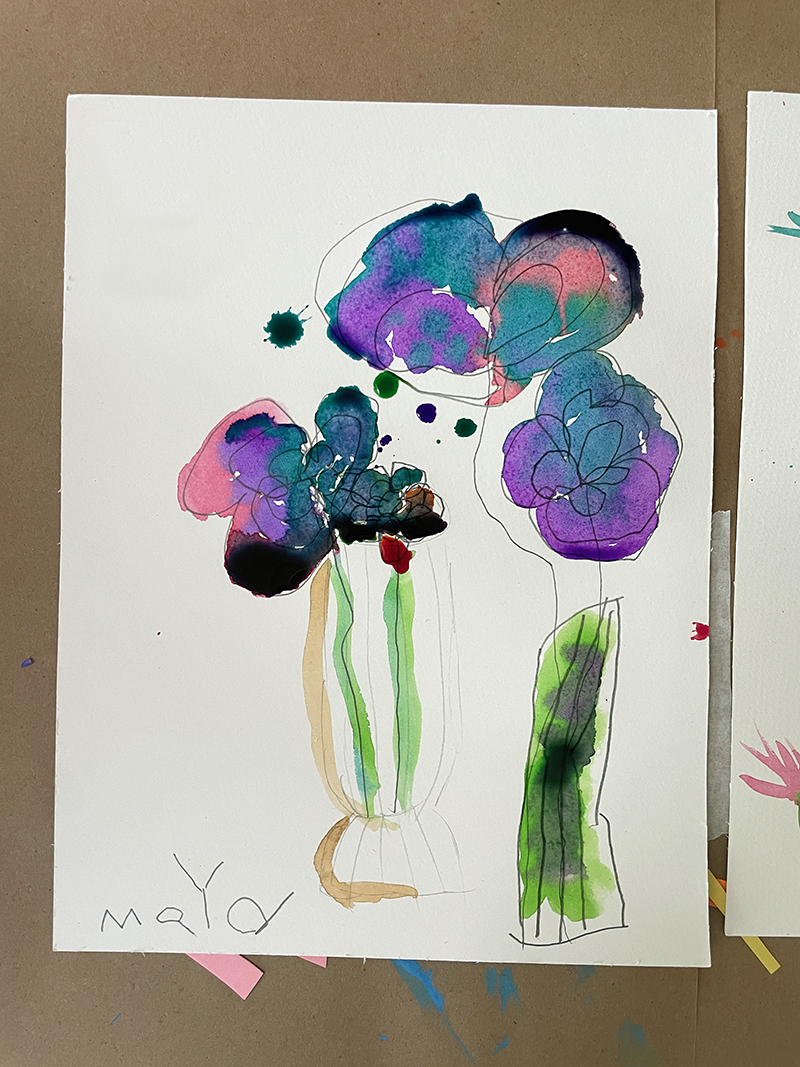
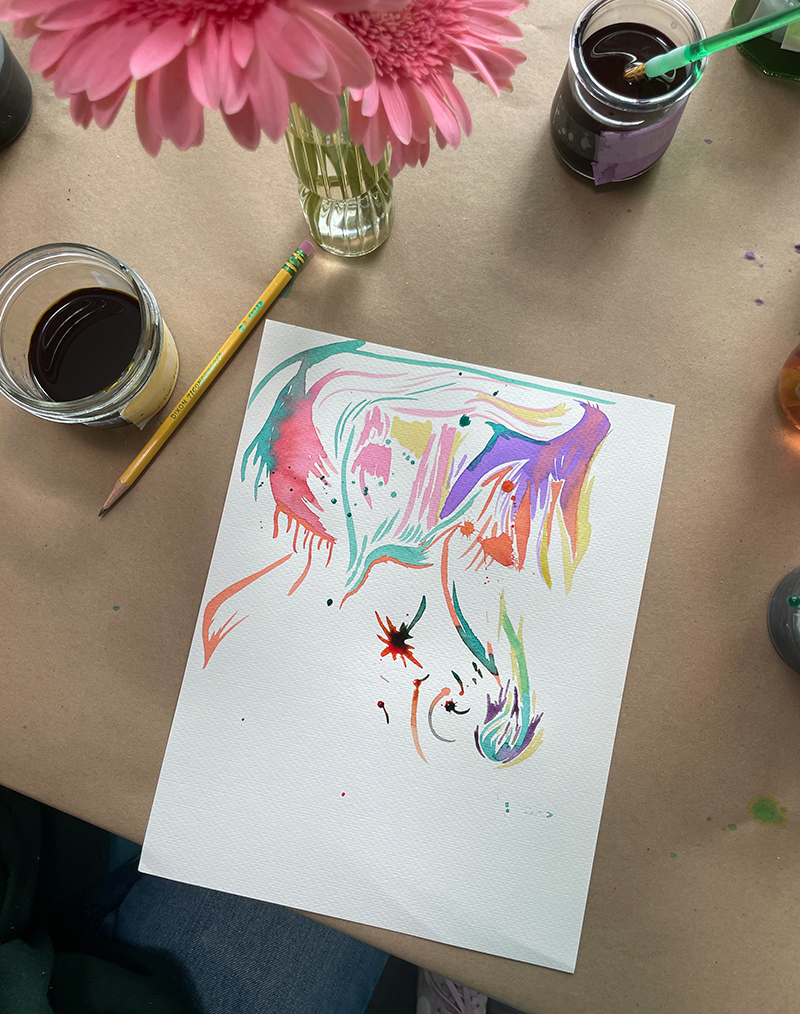
The beautiful part was that the older sister decided to explore the liquid watercolor on her own, interpreting what she saw on the table as bursts of color!
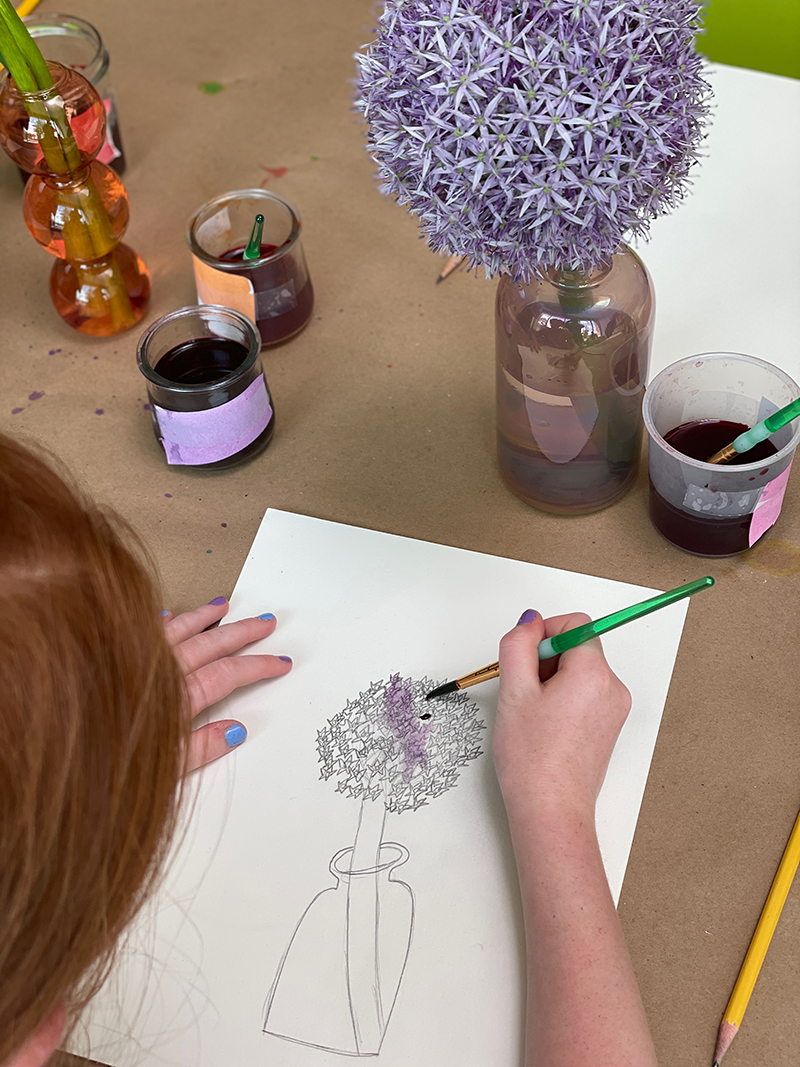
This young girl, about age 12, chose the hardest flower on the table to draw and used the eraser often. She reminded me of myself, ever the perfectionist. She was also at the table for well over 30 minutes, and had never used the liquid watercolor either. She exhibited so much concentration and perseverance. She was really proud of her finished piece. I love watching creative confidence flourish. I hope she frames it!
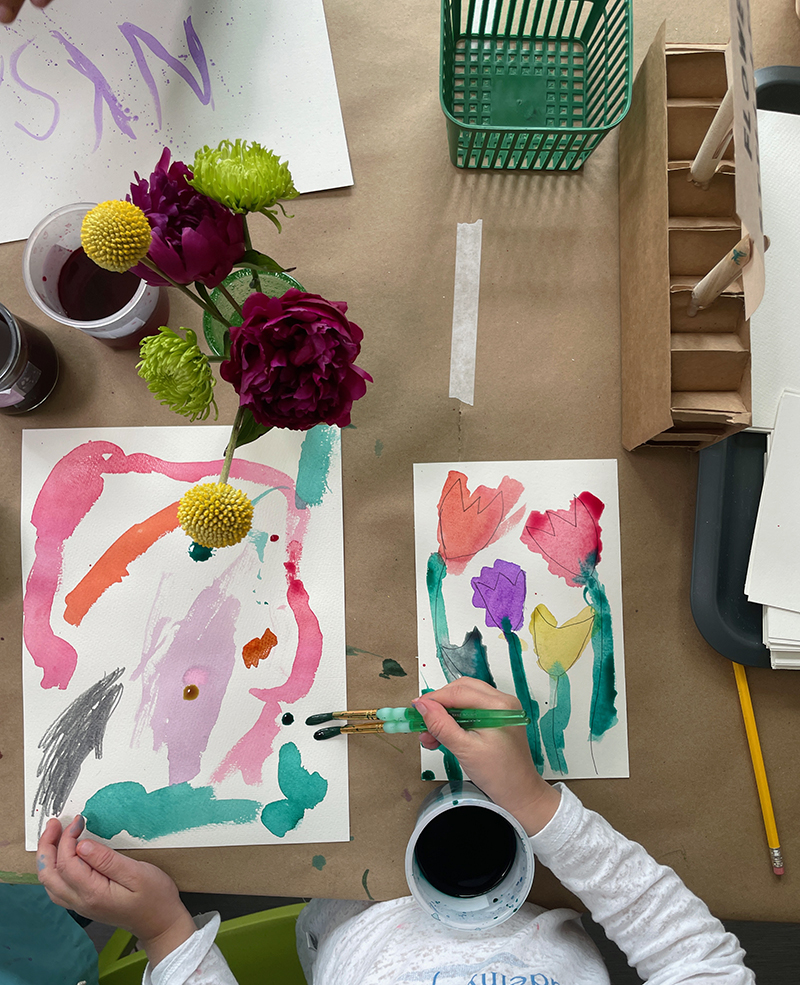
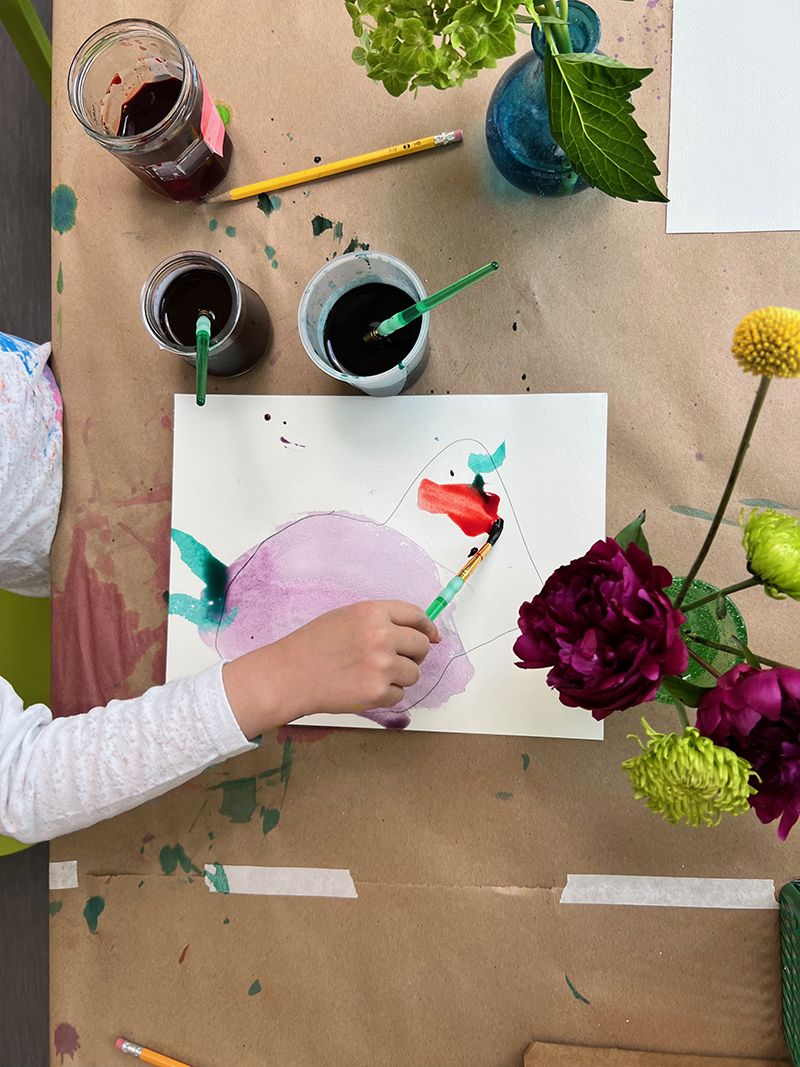
The child above is another transformation story that I love. She was about 5 years old, and her parent initially sat down with her and drew some flowers for her to paint in, like a coloring book. The child then left the table and began to explore the other tables. Her parent in the meantime noticed that her child was pretty confident in the things she was making. She let go of her own pre-conceived notions about how the art was supposed to look, and gave her daughter more freedom. I love this transformation, and I was super proud of the parent for developing this flexible mindset so quickly. Her daughter circled back to the still-life table continued exploring the paint on her own.
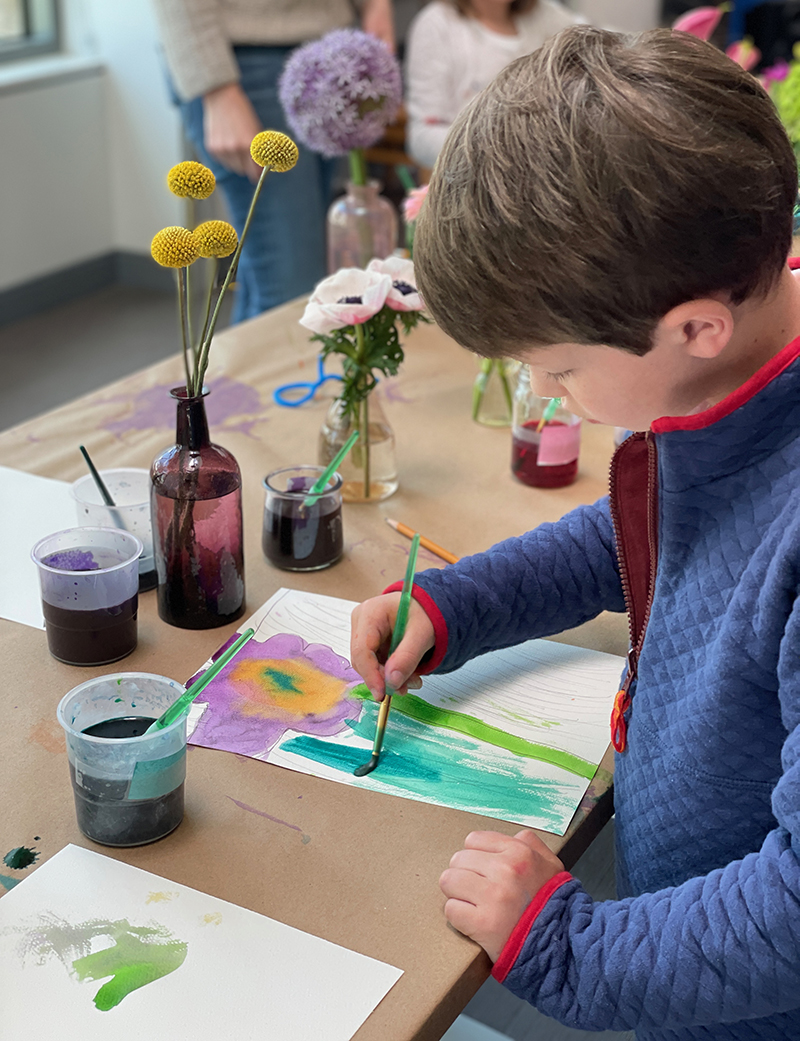
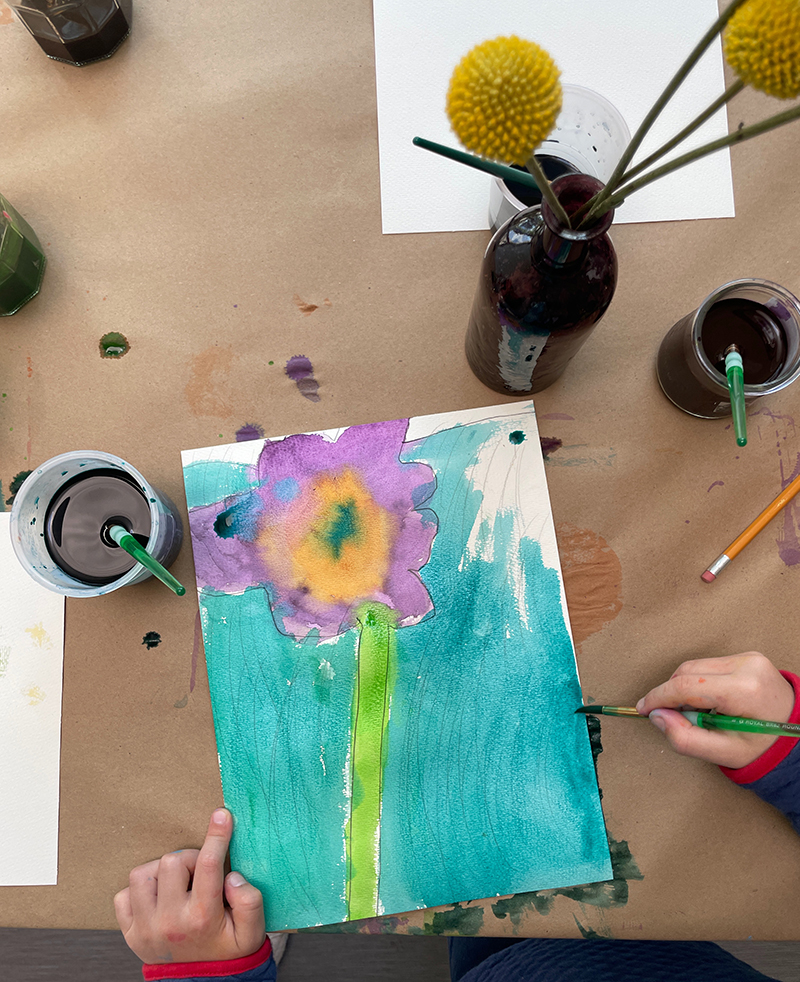
This young boy was one of the few who filled the whole page, which I appreciate 🙂 He even asked me if I had sky blue. I mixed some for him and he used it at the tippy top. He also discovered a technique for drying the paint faster, which was to turn it over and blot it on the butcher paper. So smart.
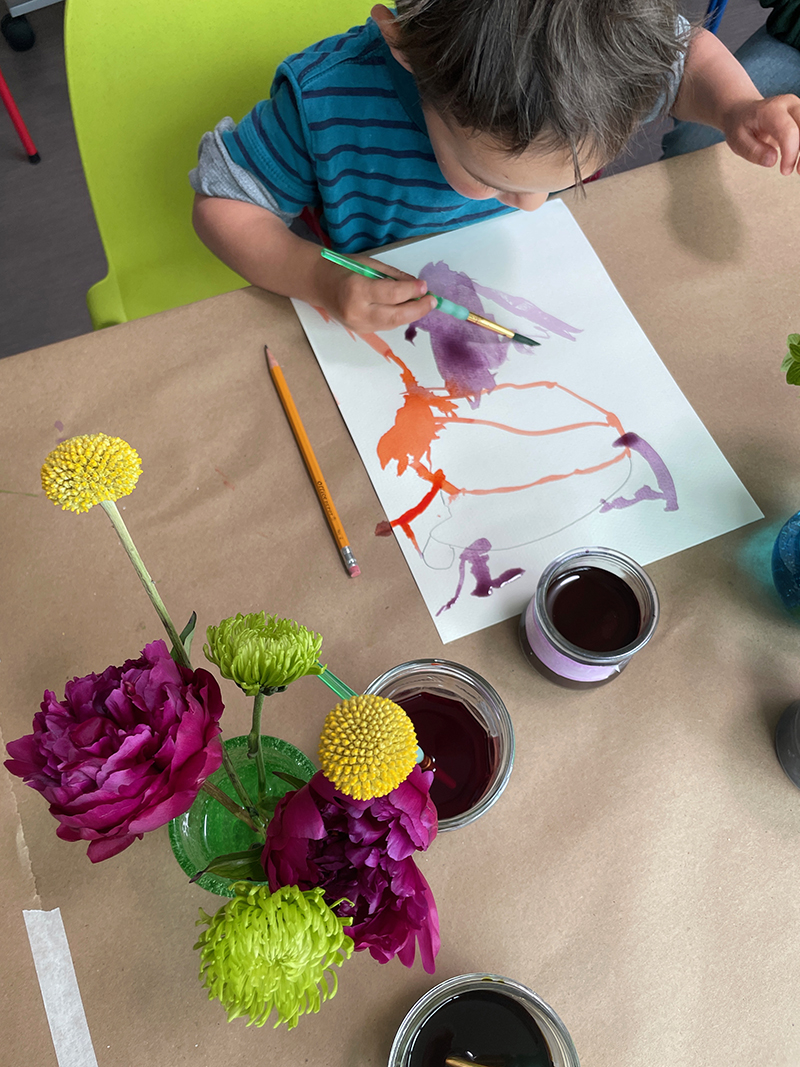
This was one of the youngest artists, at about age 3. He used the pencil to make some lines and then went on to spend 10 minutes exploring the paint.
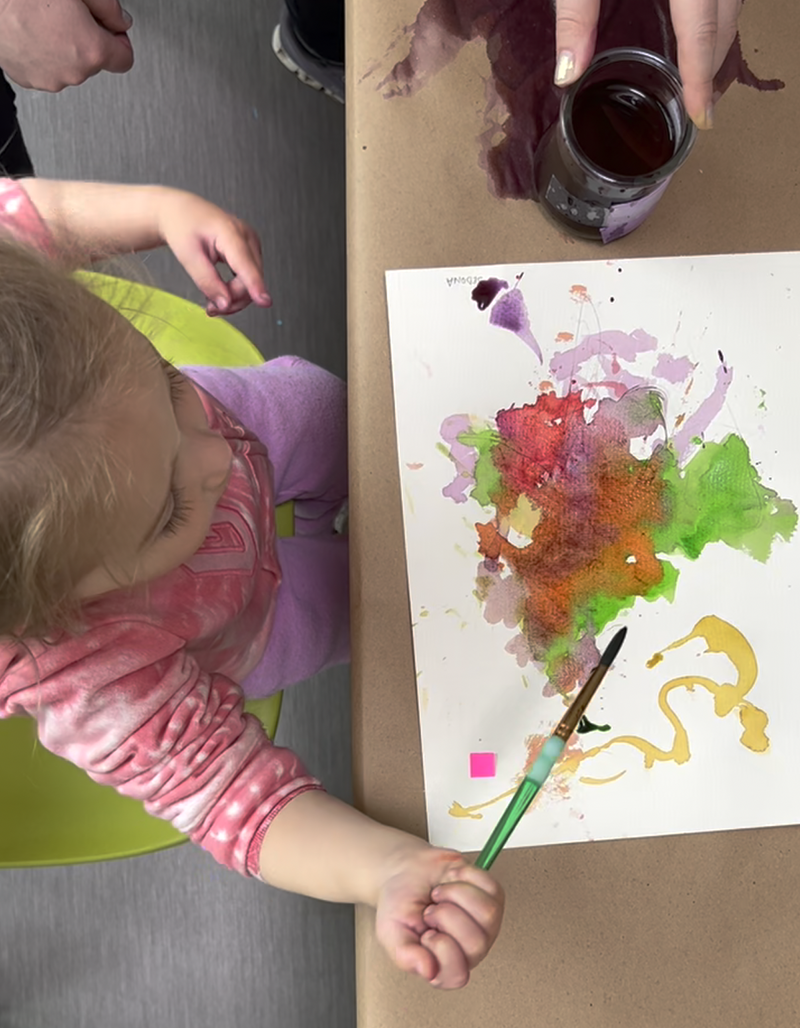
My favorite and sweetest moment of the day was witnessing this young toddler above using a paintbrush for the first time. Her parents were standing at her side and they brought her colors and helped her put the brushes back in the right jars. But otherwise they just let her explore with no constraints. She had full agency over her artistic choices. She even brought her painting over to the maker table to add some stickers, and then brought it back to work on it a little more. I hope they frame this!
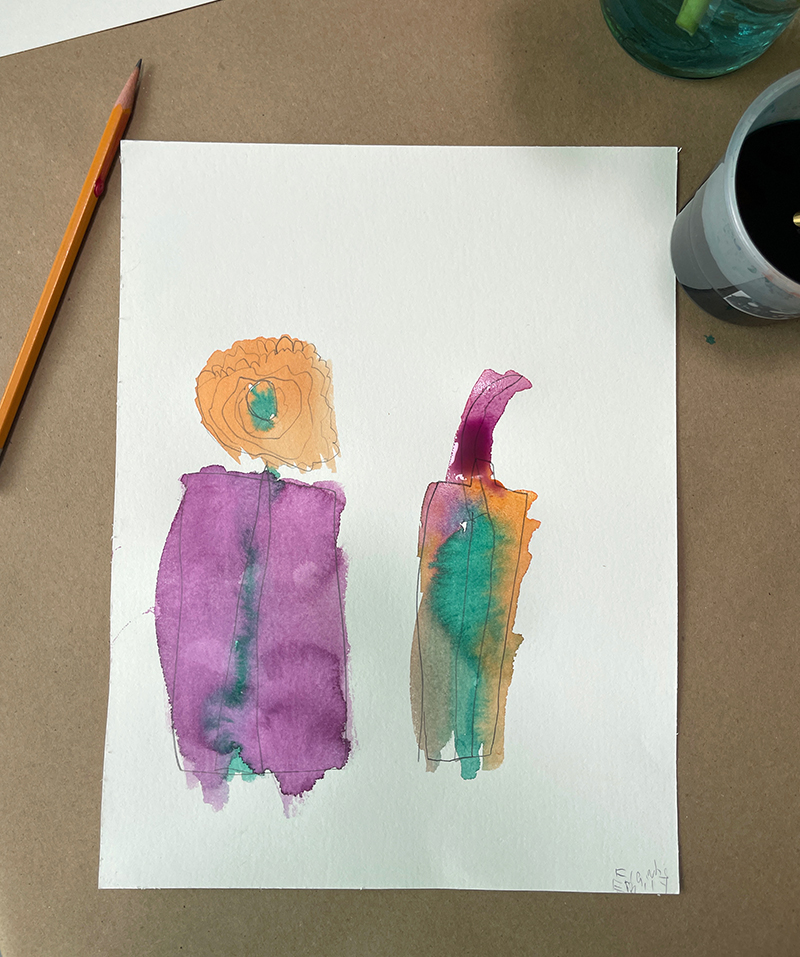
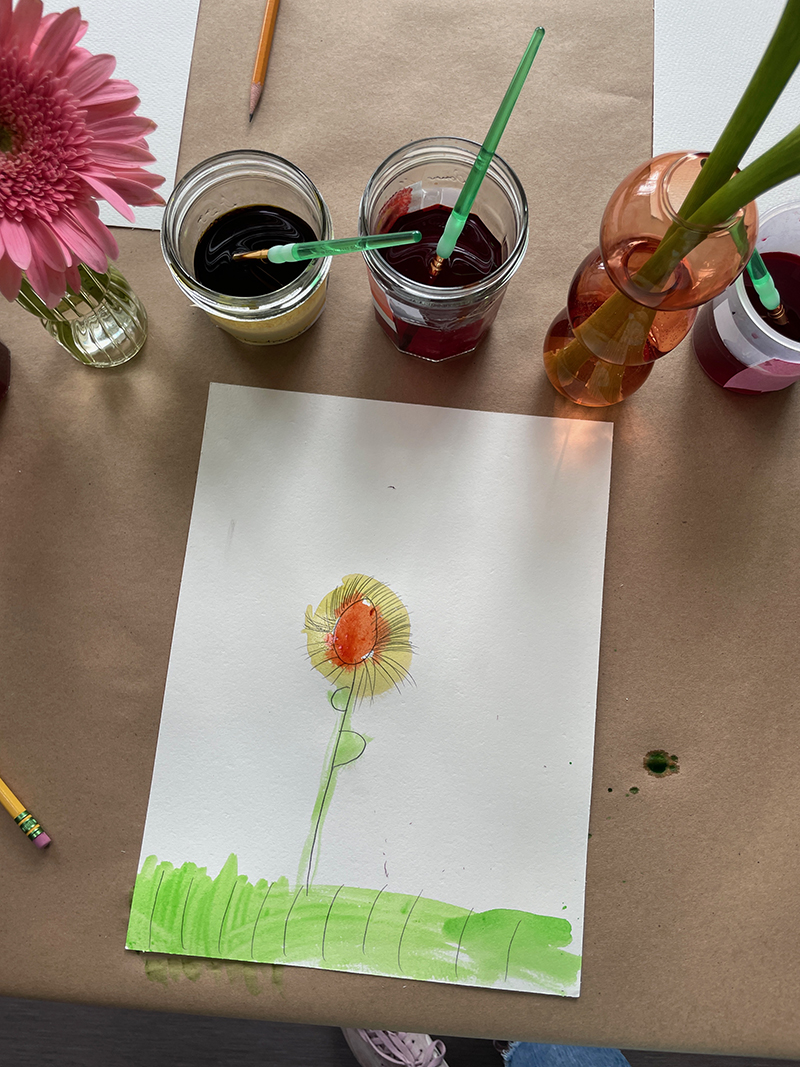
There were many paintings that I didn’t see being made. I snapped photos of some of my favorites. I wish I had taken more video, but then again it felt a little intrusive to be hovering with a phone while parents were there. I’m just happy it was a success!
I hope you try this in your world, whether at a party, a school, or at home. The key to a successful, multi-age experience is making it open-ended so everyone has freedom of choice and no expectations. Oh, and one more thing — make sure you have plenty of paper! There is nothing worse than running out of materials.
xo Bar
– – – – – – – – – – – – – – – – – – – – –
Did you like this post? Here are more still-life drawing and painting ideas:
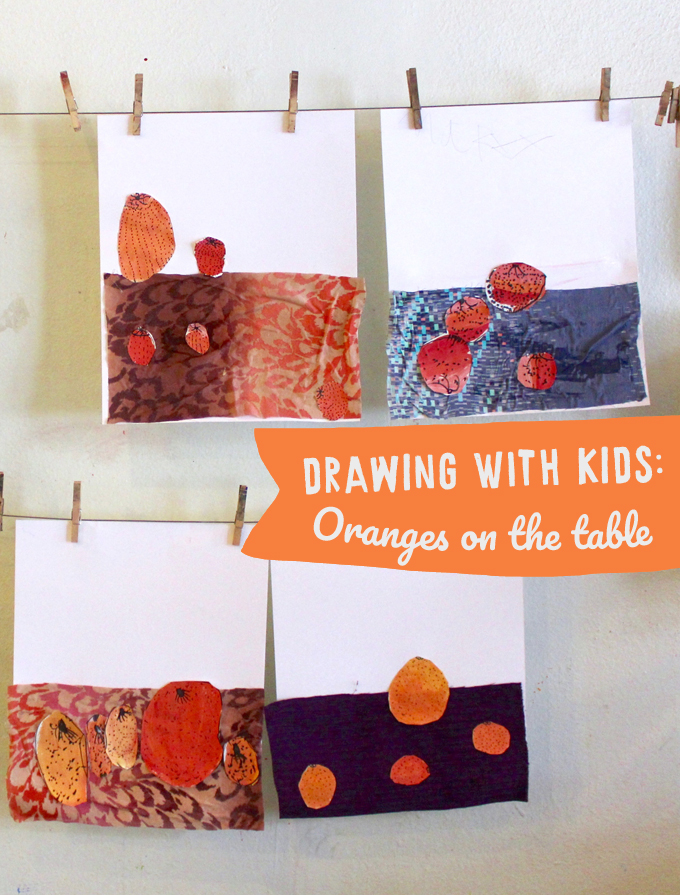
Drawing with Kids: Oranges on the Table
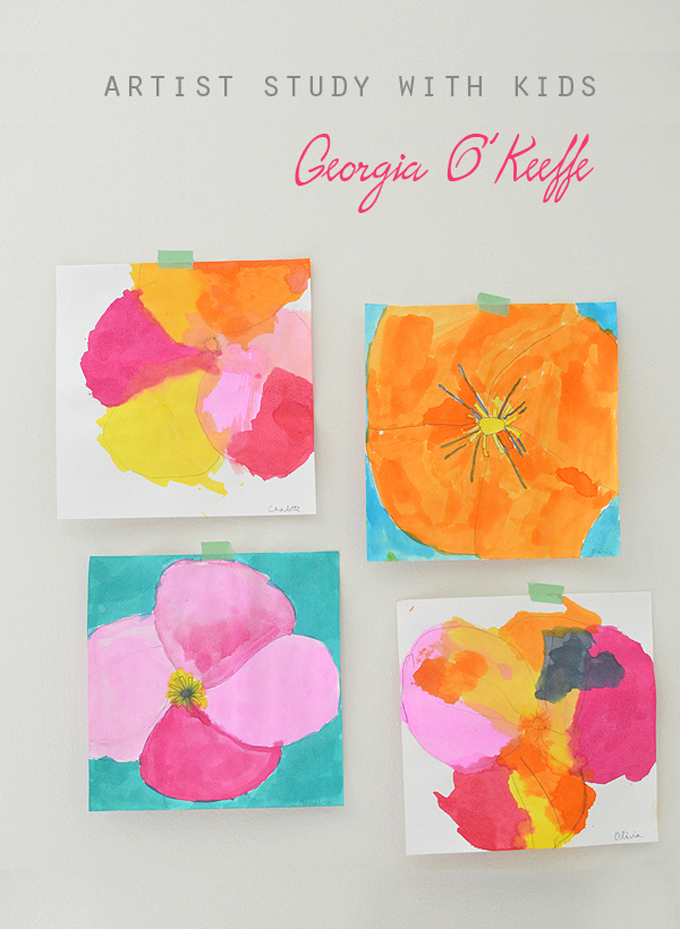
Georgia O’Keeffe Artist Study with Kids
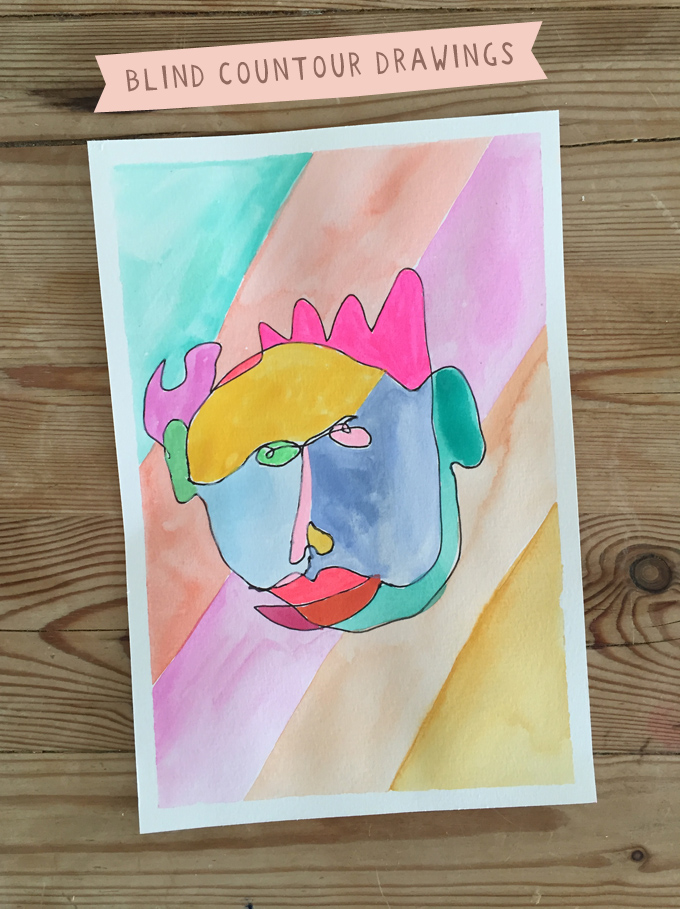
Blind Contour Drawings with Kids

